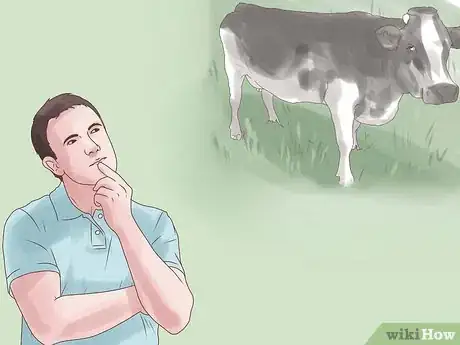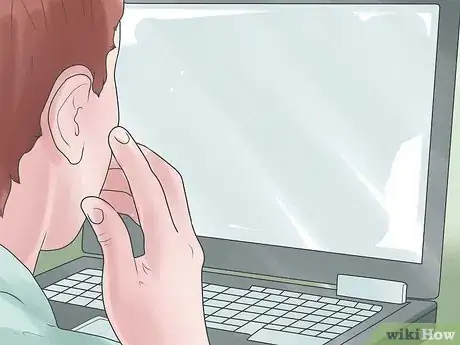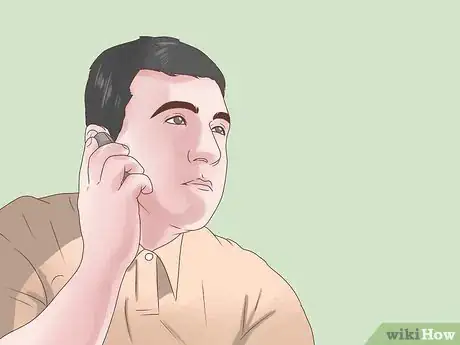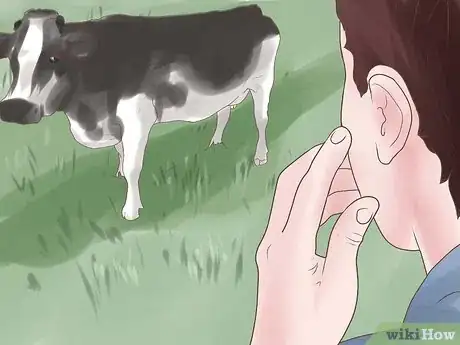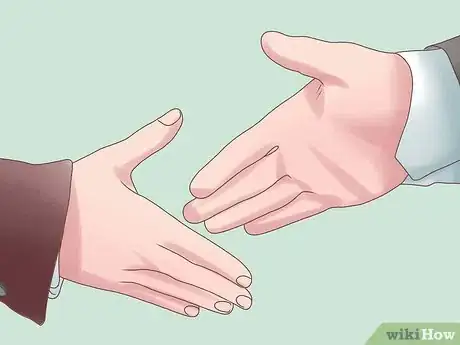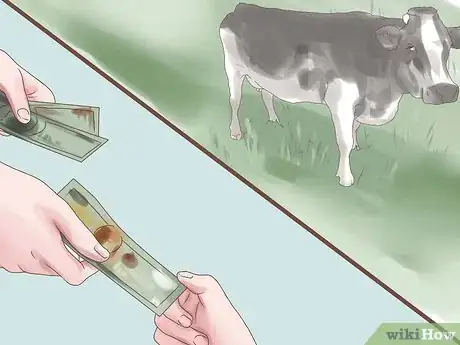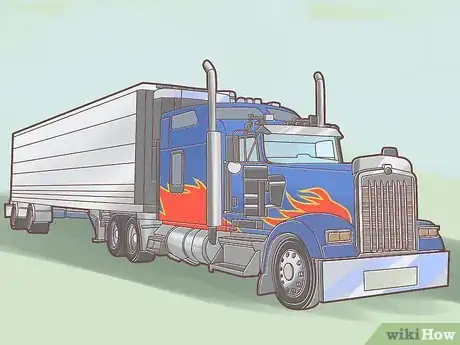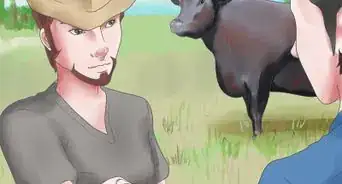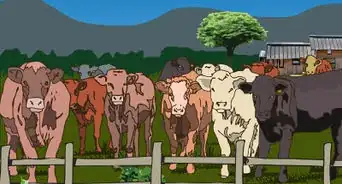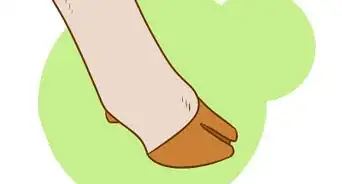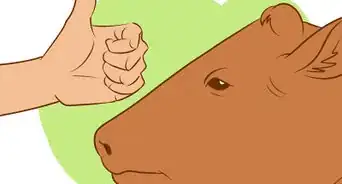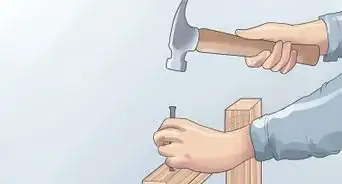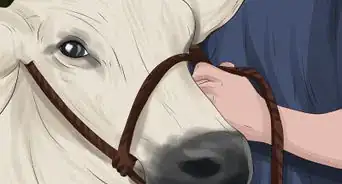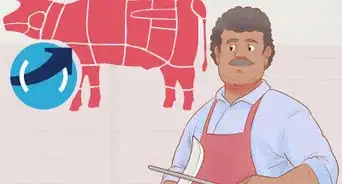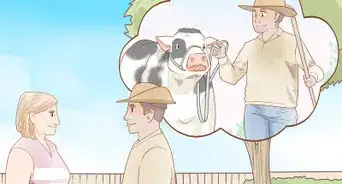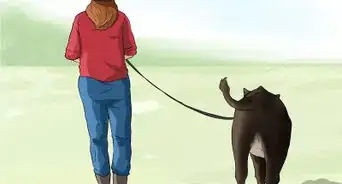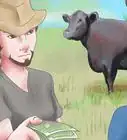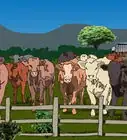This article was co-authored by Karin Lindquist. Karin Lindquist earned a BSc in Agriculture as an Animal Science major from the University of Alberta, Canada. She has over 20 years of experience working with cattle and crops. She's worked for a mixed-practice veterinarian, as a sales representative in a farm supply store, and as a research assistant doing rangeland, soil, and crop research. She currently works as a forage and beef agriculture extension specialist, advising farmers on a variety of issues relating to their cattle and the forages they grow and harvest.
There are 9 references cited in this article, which can be found at the bottom of the page.
wikiHow marks an article as reader-approved once it receives enough positive feedback. In this case, 85% of readers who voted found the article helpful, earning it our reader-approved status.
This article has been viewed 221,714 times.
If you’re a farmer in the dairy or beef business, you’ll need to know how to appraise and purchase cattle. While this can seem like an overwhelming process at first, rest assured that you’ll be a cattle-buying pro in no time. In this article, we’ll break down everything you need to know about buying cattle. From finding potential opportunities to carrying out the transaction and more, we’ve got you covered.
Steps
Community Q&A
-
QuestionIs having a cow in my backyard a sensible thing to do?
 Community AnswerNot if your backyard is less than an acre in size. Even one acre is not enough to support a cow, because you will be feeding most of the time and cleaning up a lot of poop too. If you have no extra acreage (over 2 acres) for pasture, and not enough room for an extra cow for her company, it's not a sensible thing to have a cow in your backyard. Even if the cow is a miniature animal, it still needs room. And you need extra room to store all the feed you need to keep the cow without having to go out and buy feed every other day like taking a quick trip to the grocery store. When you get feed, you should have enough to last you for several months or even a year.
Community AnswerNot if your backyard is less than an acre in size. Even one acre is not enough to support a cow, because you will be feeding most of the time and cleaning up a lot of poop too. If you have no extra acreage (over 2 acres) for pasture, and not enough room for an extra cow for her company, it's not a sensible thing to have a cow in your backyard. Even if the cow is a miniature animal, it still needs room. And you need extra room to store all the feed you need to keep the cow without having to go out and buy feed every other day like taking a quick trip to the grocery store. When you get feed, you should have enough to last you for several months or even a year. -
QuestionIn one production cycle, how many calves should I expect to be male?
 KarinTop AnswererFor any cow, you have a 50% chance of getting male calves.
KarinTop AnswererFor any cow, you have a 50% chance of getting male calves. -
QuestionI want to start business of buying cattle, but I don't know where or what to do, and am new in this business industry, can you please help further?
 KarinTop AnswererGo to school, college preferably, and take some agricultural business courses, along with a course or two on beef cattle production, cattle pricing, beef economics, and similar things. To start earning money, work at a livestock auction where you get to see and work with the various kinds of animals that come in, and learn as much as you can there. You will need to spend money to learn in order to make money being a cattle buyer, and start from the bottom in order to get to the top. Talk to a few livestock market sales people to see how and where they got to where they are and see if they have any tips for you!
KarinTop AnswererGo to school, college preferably, and take some agricultural business courses, along with a course or two on beef cattle production, cattle pricing, beef economics, and similar things. To start earning money, work at a livestock auction where you get to see and work with the various kinds of animals that come in, and learn as much as you can there. You will need to spend money to learn in order to make money being a cattle buyer, and start from the bottom in order to get to the top. Talk to a few livestock market sales people to see how and where they got to where they are and see if they have any tips for you!
Warnings
- Don't buy based on emotional value of a particular animal. You should be more interested in its productivity and use to your farm and cow herd, not whether it looks cute, or if you feel sorry for it because it looks sick or terribly thin, or even based on coat color. However, it should also be mentioned that there can be exceptions to this rule, especially with the coat-color and possibly the cuteness factor. Above all, don't bring a contagious animal back to your own ranch––if in doubt, it's better to spend the money on a vet check before purchase, or leave it altogether.⧼thumbs_response⧽
- Beware of scams and spammers. Though this is more rare in the cattle industry than any other industry, you still need to be cautious.
- Beware of sellers who ask you for cash only and no cheque (check), request to pay before sending animals out (especially if you don't have a trailer to bring them home with), ask for your bank account number, credit card number, or anything else related to finances and banking that the seller has no business knowing.
- These type of people are ones to avoid and to keep well away from. Most importantly, if they do ask for such information do not give it out. Instead, either tell them that you'll pay them face to face after you've got the animals in your trailer, or tell them, "I would but I'd have to phone the authorities first."
⧼thumbs_response⧽ - Beware of sellers who ask you for cash only and no cheque (check), request to pay before sending animals out (especially if you don't have a trailer to bring them home with), ask for your bank account number, credit card number, or anything else related to finances and banking that the seller has no business knowing.
- Keep a look out for owners that seem to be getting impatient, defensive, offended or even telling seemingly tall-tales or lies about a particular animal you're asking about.
- People who are just getting into the cattle business and don't have a good idea of how to negotiate prices, ask the right questions or even how to watch the person you are buying cattle from for signs of falsehoods may get swindled more easily than those who are more experienced buying cattle one-on-one.
- If this may be the case, and if you are that person, bring a friend with you, particularly a friend that is very experienced in the ins-and-outs of buying cattle.
⧼thumbs_response⧽ - People who are just getting into the cattle business and don't have a good idea of how to negotiate prices, ask the right questions or even how to watch the person you are buying cattle from for signs of falsehoods may get swindled more easily than those who are more experienced buying cattle one-on-one.
Things You'll Need
- Access to relevant media for browsing/searching out sales opportunities
- Registration papers (optional)
- Pre-determined budget and plan
- Vet contact details
- Appropriate shelter, food, grooming gear, halter, lead, etc.
- Transportation
References
- ↑ http://afs.okstate.edu/breeds/cattle
- ↑ https://www.agriculture.com/livestock/cattle/beef/starting-a-beef-herd-from-scratch_277-ar30862
- ↑ https://www.homestead.org/livestock/beginner-s-guide-to-buying-cattle/
- ↑ https://www.beefmagazine.com/blog/6-tips-buyers-sellers-cattle-sale
- ↑ https://www.beefmagazine.com/feedlots/what-do-order-buyers-really-look-cattle-they-buy
- ↑ Based on research undertaken by Dr. Temple Grandin.
- ↑ https://www.wideopenpets.com/how-much-does-a-cow-cost-and-where-can-i-get-one/
- ↑ http://agriculture.vic.gov.au/agriculture/livestock/beef/handling-and-management/transport-and-care-of-cattle
- ↑ http://www.fao.org/3/t0690e/t0690e0b.htm
